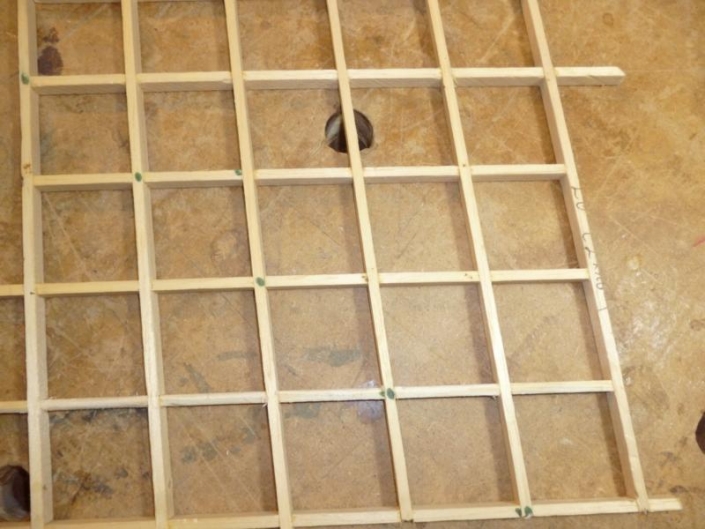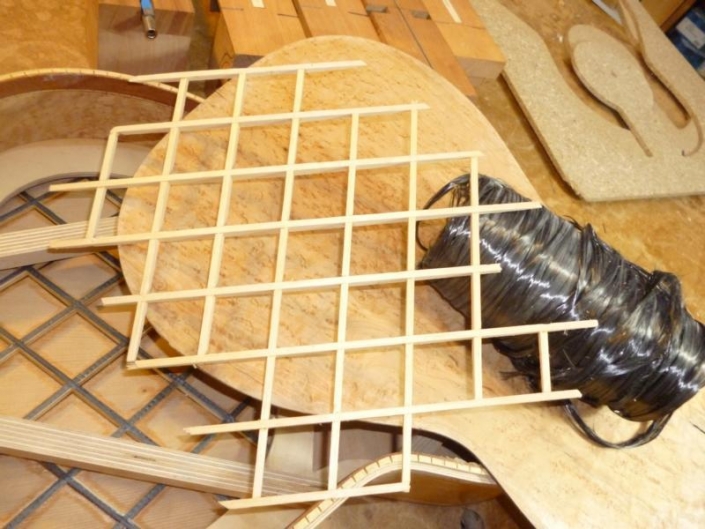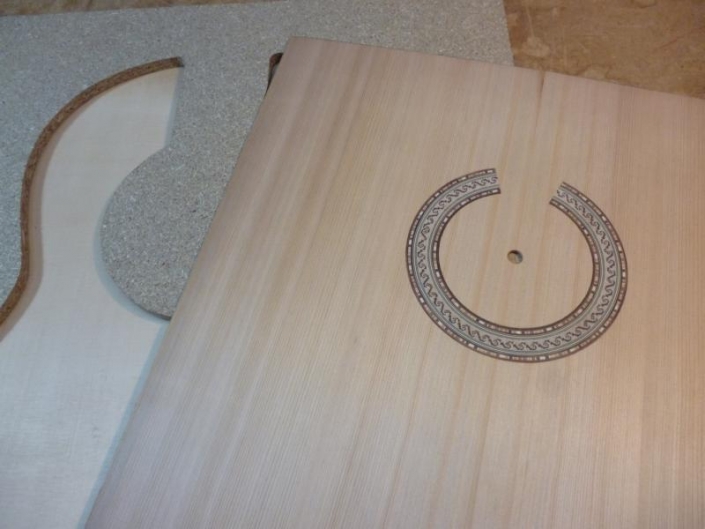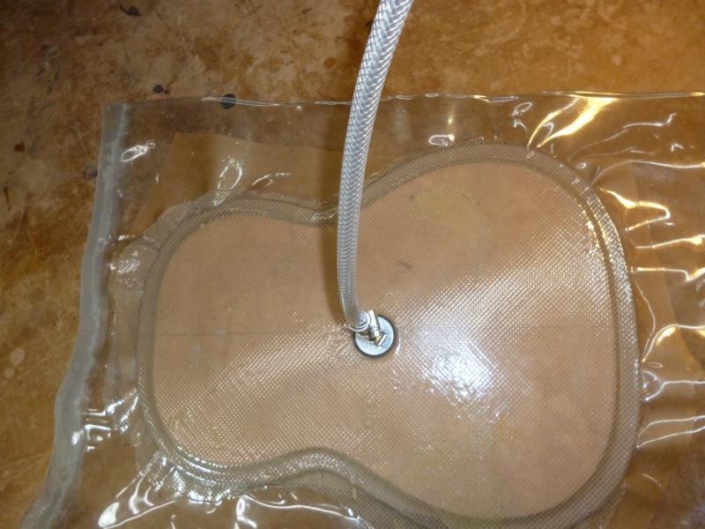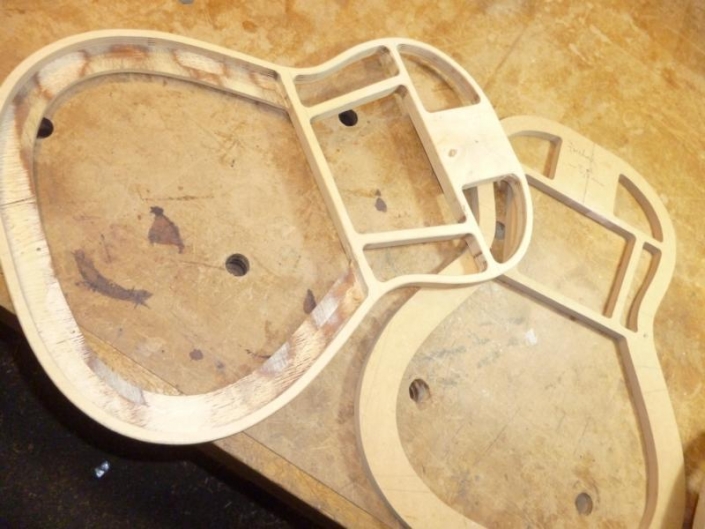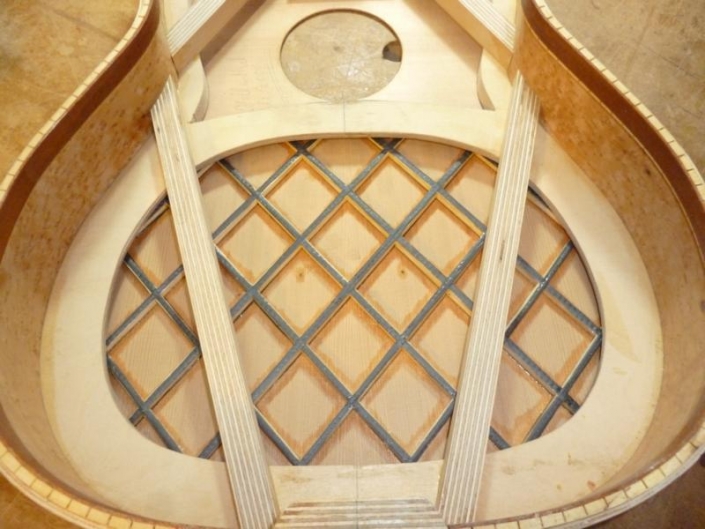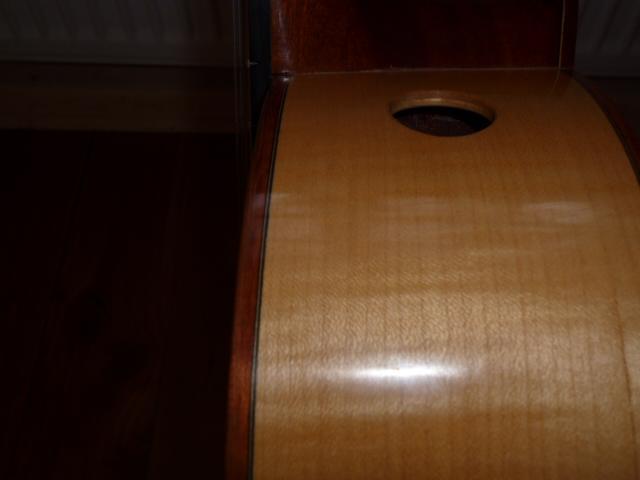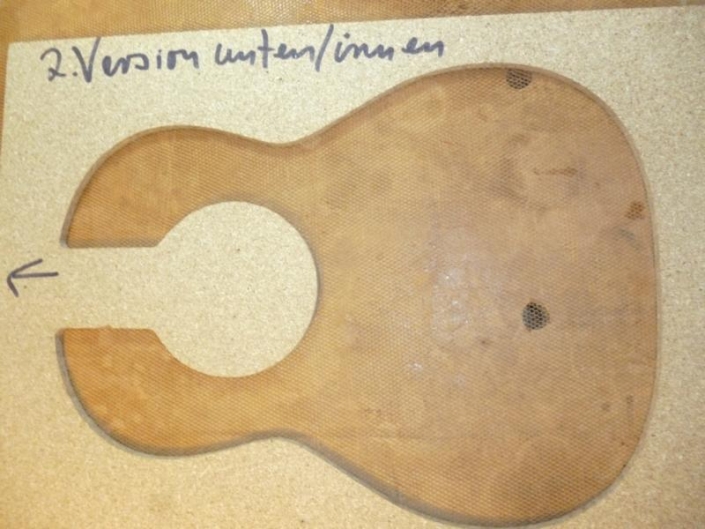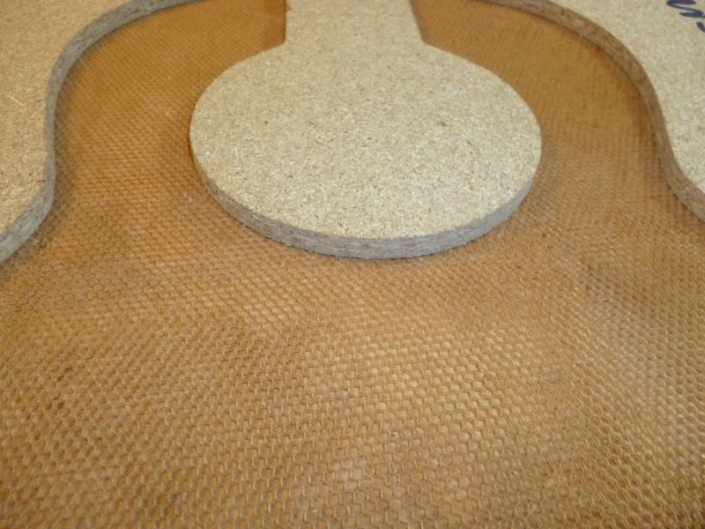Structure of the guitar
Special constructions of the guitar in the 20th century
Classical guitar making and guitar making in general has changed dramatically in the last 40 years. Considering the sonic evolution of the modern playing technique, especially the right hand, since Manuel Barrueco and David Russel did, this inevitably leads to a new sound profile of the instrument. The now required guitars must be able to transport the dynamic, tonal and polyphonic ideas of the player even more directly and easily. This plays a role especially for the guitarists, who play a lot of shows and jetlag in the evening at 20.00 o’clock on the stage, and there CD-Quallität deliver. Modern construction techniques such as double top or lattice construction mixed with traditional Spanish construction.
Both constructions enormously increase the overall parameters of the instrument. However, this sound behavior is not desired by all guitarists. For some years now, there has been a strong trend back to traditional construction. Here one remembers oneself particularly, on the unquestionably existing Klang Quallitäten of the large old masters like Hauser, Santos Hernandez and Friedrich etc. a real renaissance experience exactly the instruments of Antonio Torres and its contemporaries like Vicente Arias. Unfortunately, the tonal beauty of these guitars is rarely reached today.
Lattice Bracing
This design is primarily associated with the Australian Greg Smallman. The name Lattice Bracing was derived from the grid-shaped verbalization of the ceiling (1). Although experimenting with this equipment much earlier, this development is mainly attributed to Greg Smallman, who became a pioneer of this construction in the late ’80s.
The fact that well-known concert guitarist John Williams played a smallman triggered a veritable lattice boom. However, the very own sound characteristics did not arise exclusively due to the o.g. Verbalization, but rather is a result of the overall design.
Hitherto unusual materials such as carbon fiber balsa wood (2) laminates have been used to optimize the weight / stiffness ratio. These are combined with ultra-thin red-cedar blankets, which are usually well under 1mm thin (3).
In order to avoid unfavorable couplings to the ceiling, the natural vibration behavior of floors (4) and frames is prevented as far as possible. To achieve this, these components are sometimes glued up to 10 layers of veneer.
In order to gain additional mass and rigidity, both the frame and the ceiling are glued with a heavy multiplex board (5). The active vibration range of the ceiling is thus limited exclusively to the lower arch (6). My own reconstructions in this design always resulted in instruments with an enormous volume and an extremely light response. However, the tonal range for me in the long run was somewhat unsatisfactory. This prompted me to translate this conception into a more traditional style of construction that dispenses with synthetic materials. In addition, the balsa wood is replaced by spruce wood (7). Back and sides are not made of inferior, industrially cut veneer, but of self-made sawmill (8).
In this way, a much higher Quallität and control of fiber flow slice thickness, storage, drying or stiffness / weight is achieved. The resulting veneers are due to their careful cut of a much higher quality, more than twice as thick and thereby much more resistant to warping and tearing than comparable industrial veneers.
Due to the greater thickness of the veneers, a smaller number of layers is required, which at the same time results in a higher proportion of wood (9). The higher proportion of solid wood causes a much more natural sound spectrum in the finished instrument.
The overall Kang receives much more shares of a traditionally built guitar, but with heavily modified weight-stiffness ratios. With the unfolding of the sound a clearly higher presence of the single tones is audible without affecting the sustain. The basses are much fuller than with a carbon / balsa / veneer construction with absolutely consistent sound intensity over the entire fingerboard. Sound differences in strings and position changes are less noticeable, with high clarity and projection.
